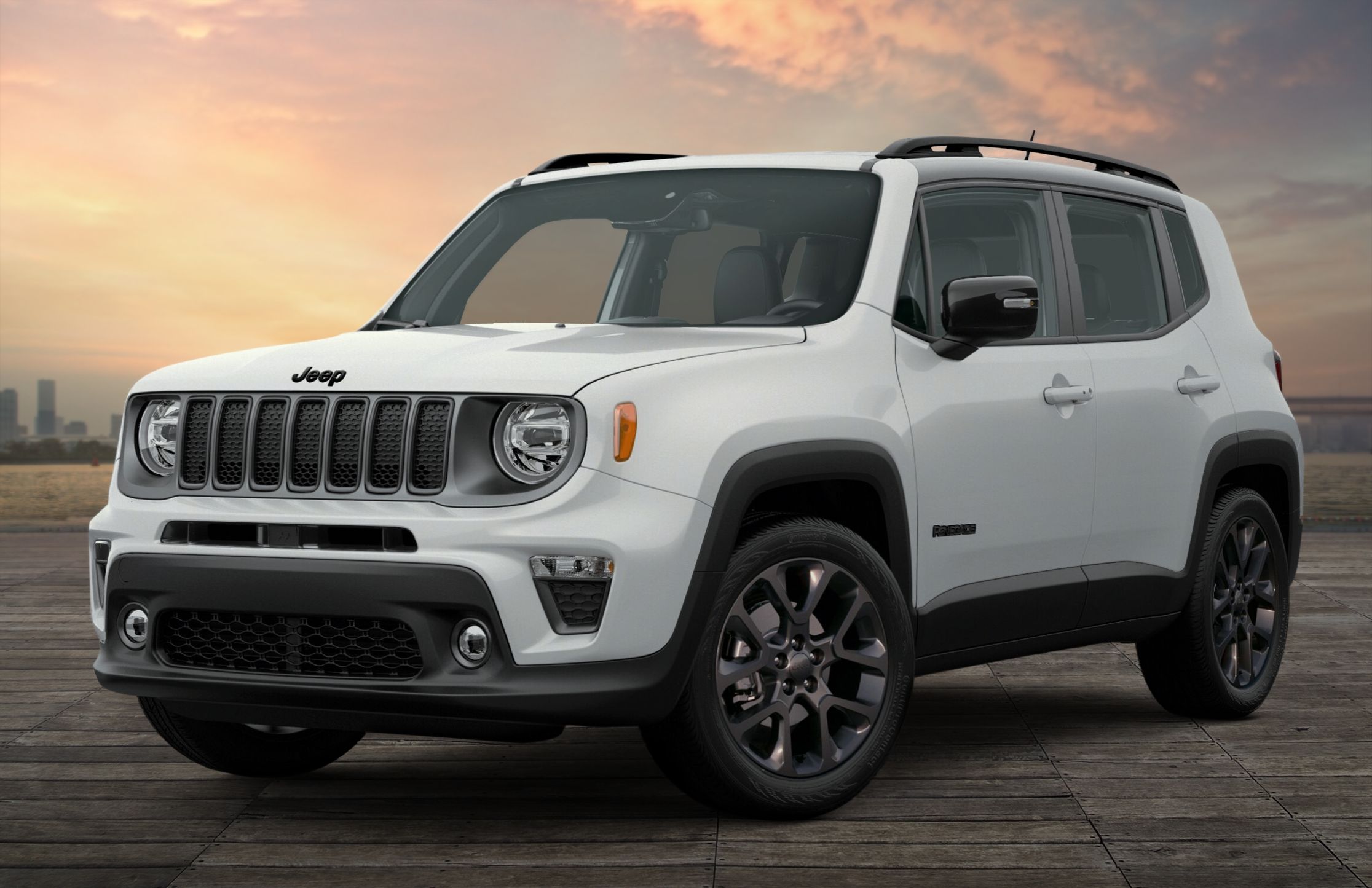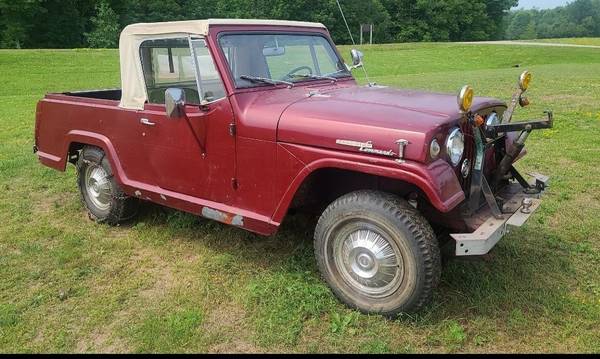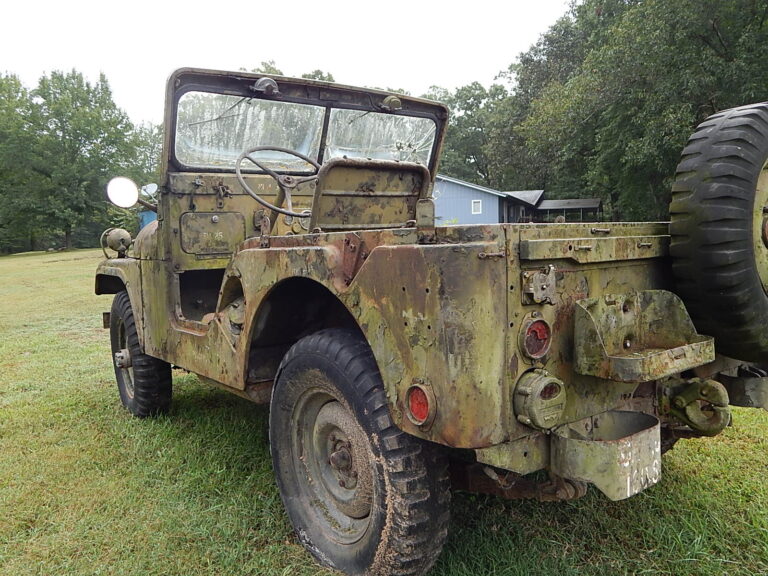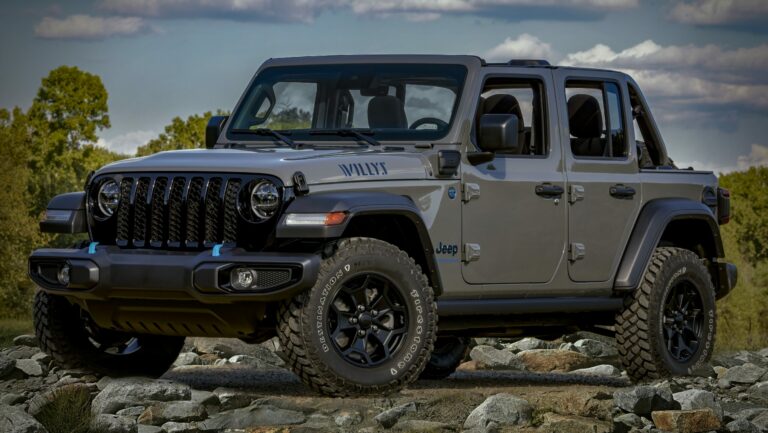Jeep Dana 60 For Sale: Unlocking Ultimate Off-Road Prowess
Jeep Dana 60 For Sale: Unlocking Ultimate Off-Road Prowess jeeps.truckstrend.com
For serious off-road enthusiasts, rock crawlers, and anyone pushing the limits of their Jeep, the phrase "Jeep Dana 60 For Sale" resonates with the promise of unparalleled strength and capability. The Dana 60 axle is not merely a component; it’s a legendary upgrade, an ironclad statement of intent for those who refuse to be held back by terrain. This comprehensive guide will delve into everything you need to know about finding, evaluating, and integrating a Dana 60 into your Jeep, transforming it from a capable vehicle into an unstoppable force.
The Unrivaled King: Why the Dana 60 Stands Apart
Jeep Dana 60 For Sale: Unlocking Ultimate Off-Road Prowess
At its core, the Dana 60 is a heavy-duty, full-floating axle designed to withstand extreme punishment. Its reputation as the "King of Axles" for custom builds and serious off-road rigs is well-earned, stemming from several key advantages over lesser axles found in stock Jeeps:
- Unmatched Strength and Durability: The Dana 60 boasts a significantly larger ring and pinion gear set, larger axle shafts, and a more robust housing compared to the Dana 30, 35, or even the Dana 44 found in many Jeeps. This inherent strength allows it to handle much larger tires (typically 37 inches and up), increased horsepower, and the immense shock loads encountered during aggressive off-roading, such as jumping, rock crawling, and high-speed desert runs.
- Superior Load Carrying Capacity: Its full-floating design means the axle shafts only transmit torque, while the wheel bearings support the vehicle’s weight on the spindle. This design is inherently stronger and more reliable, especially when carrying heavy loads or experiencing severe impacts.
- Versatility for Extreme Builds: Whether you’re building a dedicated rock buggy, a mud monster, or an overland rig that needs to traverse the gnarliest trails, the Dana 60 provides the foundation. It’s adaptable to various Jeep models – from the classic CJ and YJ to the TJ, JK, and even the newer JL and JT Gladiators – though often requiring custom mounting and modification.
- Enhanced Performance Potential: With a Dana 60, you gain the confidence to push your Jeep harder. Its robust nature allows for the installation of extreme gearing, advanced locking differentials, and heavy-duty braking systems, all without fear of component failure that plagues smaller axles. This translates directly into improved traction, control, and overall performance in the most challenging environments.
- Long-Term Investment and Resale Value: While a Dana 60 swap can be a significant investment, it’s one that pays dividends in reliability and performance. Furthermore, a Jeep equipped with properly installed Dana 60s often commands a higher resale value within the enthusiast market due to the recognized quality and capability of the upgrade.

Understanding the Different Types of Dana 60 Axles
Not all Dana 60s are created equal. When searching for a "Jeep Dana 60 For Sale," it’s crucial to understand the distinctions:
- Front vs. Rear: Dana 60s are available for both front and rear applications. Front axles will include steering knuckles, ball joints or kingpins, and provisions for steering linkage. Rear axles are simpler, typically a solid housing with spindle ends.
- High Pinion vs. Low Pinion:

- Low Pinion (LP): The most common design, where the pinion shaft enters the differential housing below the centerline of the axle shafts. Generally found in rear axles or older front axles.
- High Pinion (HP): The pinion shaft enters above the centerline. Predominantly found in front axles (e.g., Ford HP60). This design offers better driveshaft angles for lifted vehicles, reducing driveshaft bind and improving ground clearance under the differential housing. For front applications, HP is generally preferred.
- OEM Pull-outs: These are axles sourced from factory vehicles, primarily heavy-duty trucks from manufacturers like Ford, Chevrolet, Dodge, and even some older military vehicles.

- Ford Dana 60s: Highly sought after for front applications due to their high-pinion design (HP60) and often wider stances. Older Ford Kingpin 60s (pre-1991.5) are particularly prized for their legendary strength and rebuildability, though they are becoming harder to find. Later models use ball joints.
- Chevy/Dodge Dana 60s: Often low-pinion in the front, but still incredibly strong for rear applications.
- Key Consideration: OEM pull-outs typically require significant modification (new brackets, narrower width, different bolt patterns, steering upgrades) to fit a Jeep chassis.
- Aftermarket Axles: Companies like Dynatrac, Currie Enterprises, Spidertrax, TeraFlex, and G2 Axle & Gear manufacture purpose-built Dana 60 axles specifically for Jeep applications.
- Advantages: Often direct bolt-in replacements (or require minimal fabrication), custom widths available, pre-set gear ratios, choice of lockers, stronger housings and components than OEM, and modern brake systems.
- Disadvantage: Significantly higher cost than used OEM pull-outs.
Where to Find a Jeep Dana 60 For Sale
The hunt for a Dana 60 can take you to various places, each with its pros and cons:
- Online Marketplaces:
- Craigslist/Facebook Marketplace: Excellent for finding local used OEM pull-outs. Be prepared to travel and inspect in person.
- eBay: A wider selection, including both used and new aftermarket options, but shipping can be expensive for heavy items like axles.
- Dedicated Off-Road Forums (e.g., Pirate4x4.com, JeepForum.com): These communities often have "For Sale" sections where enthusiasts sell parts. You’ll find knowledgeable sellers and buyers here.
- Specialized Retailers & Axle Builders:
- Off-Road Shops: Many brick-and-mortar and online off-road performance shops sell new aftermarket Dana 60s and sometimes even refurbished OEM units. They can also offer installation services.
- Axle Builders: Companies specializing in custom axle builds (e.g., ECGS, East Coast Gear Supply) can build a Dana 60 to your exact specifications, from bare housing to complete, ready-to-bolt-in assemblies.
- Salvage Yards/Junkyards: A traditional source for OEM pull-outs. Prices can be low, but condition is often a gamble, and you might need to pull the axle yourself.
- Word of Mouth & Local Clubs: Networking within local Jeep or off-road clubs can lead to excellent deals from fellow enthusiasts upgrading their rigs.
What to Look For When Buying a Dana 60 (Inspection & Evaluation)
Buying a used Dana 60, especially an OEM pull-out, requires careful inspection. A thorough evaluation can save you significant time and money down the line.
- Physical Condition of the Housing:
- Cracks: Inspect weld seams, tube junctions, and around the differential housing for any signs of cracks. Hairline cracks can quickly become major problems.
- Bends: Look down the axle tubes from one end to the other to check for straightness. A bent housing is a major issue and often not worth fixing.
- Rust: Surface rust is common and usually cosmetic. Deep, pitting rust can compromise the structural integrity.
- Internal Components (if accessible):
- Pinion Play: Check for excessive play in the pinion shaft. A little rotational play is normal, but axial (in-and-out) or excessive lateral play indicates worn bearings.
- Leaks: Look for oil leaks around the pinion seal, axle seals, and differential cover.
- Gearing: If possible, confirm the gear ratio by rotating the input and counting output rotations, or check for gear tags. Ensure it matches your needs and other axle if doing a pair.
- Locker Type: Try to identify if a locker is installed (e.g., open differential, limited slip, full locker).
- Completeness:
- Does it come with shafts, hubs, brakes, and steering knuckles? The more complete, the less you’ll have to source separately.
- Are the splines on the axle shafts in good condition?
- Documentation: If the seller claims a recent rebuild or upgrade, ask for receipts or documentation.
- Red Flags:
- An unusually low price for a seemingly complete unit.
- Vague descriptions or unwillingness to provide more photos/information.
- Signs of severe abuse (e.g., deep gouges, signs of overheating).
Installation & Integration into Your Jeep
Swapping a Dana 60 into your Jeep is a significant undertaking that requires mechanical aptitude, fabrication skills, and specialized tools.
- DIY vs. Professional Installation:
- DIY: Possible for experienced mechanics with welding and fabrication skills. Requires precise measurements, proper welding techniques, and knowledge of suspension and steering geometry.
- Professional: Recommended for most enthusiasts. A reputable off-road shop will have the expertise, tools, and experience to ensure a safe and proper installation.
- Key Considerations for a Dana 60 Swap:
- Mounting Brackets: OEM Dana 60s will require custom spring perches, shock mounts, control arm mounts (for coil-sprung Jeeps), and track bar mounts to match your Jeep’s suspension. Aftermarket axles often come with vehicle-specific brackets.
- Driveshafts: Your stock driveshafts will almost certainly be too short and too weak. Custom-length, heavy-duty driveshafts (often 1350 series U-joints or larger) will be necessary.
- Steering & Suspension: A Dana 60 is heavy. You’ll likely need to upgrade your suspension (heavier springs, stronger shocks) to handle the increased unsprung weight. Heavy-duty steering components (tie rod, drag link, steering box) are also critical to manage the larger tires and axle.
- Brakes: The Dana 60 typically uses larger brakes. You might need adapter kits or entirely new brake systems, including master cylinder and booster upgrades, to ensure adequate stopping power.
- Gearing: If you’re only swapping one axle, ensure the new Dana 60’s gear ratio matches the other axle precisely.
- Electronic Compatibility: For newer Jeeps (JK, JL), consider how ABS sensors, speed sensors, and other electronic components will integrate with the new axle. Aftermarket axles often have provisions for these.
Costs and Budgeting for a Dana 60 Swap
The cost of a Dana 60 swap can vary wildly, from a few thousand dollars for a basic used OEM pull-out and DIY installation to well over $10,000-$20,000 for a pair of brand-new, fully built aftermarket axles installed by a professional.
-
Axle Price Range (Approximate, Highly Variable):
- Used OEM Pull-out (Bare Housing): $500 – $1,500 (requires full rebuild, shafts, brakes, etc.)
- Used OEM Pull-out (Complete, Running Condition): $1,500 – $3,500 (still likely needs rebuild/refresh)
- Refurbished/Semi-Built OEM: $3,000 – $6,000 per axle (regeared, locker, new seals, etc.)
- Aftermarket "Entry-Level" (e.g., G2, TeraFlex): $5,000 – $8,000 per axle (new, complete, bolt-in for specific models)
- Aftermarket "Premium" (e.g., Dynatrac, Currie RockJock): $8,000 – $15,000+ per axle (top-tier components, custom options)
-
Associated Costs (Often Exceed Axle Purchase Price):
- Installation Labor: $1,500 – $4,000+ per axle (depending on complexity and shop rates)
- Driveshafts: $500 – $1,000+ each (custom length, heavy-duty)
- Brake Components: $300 – $1,000+ (rotors, calipers, pads, lines, master cylinder)
- Steering Upgrades: $500 – $2,000+ (tie rod, drag link, steering box, hydro assist)
- Suspension Modifications: $500 – $2,000+ (springs, shocks, control arms, track bar)
- Gearing & Locker (if not included): $1,000 – $2,500+ per axle (parts & labor)
- Misc. Fabrication & Hardware: $200 – $500+
It’s clear that a Dana 60 swap is not a budget upgrade, but for those who demand the utmost reliability and performance, it’s an investment that pays off in the ability to tackle virtually any trail with confidence.
Table Price: Estimated Cost Guide for Jeep Dana 60 Axles (Highly Variable)
| Axle Type/Condition | Completeness/Description | Estimated Price Range (USD) | Key Considerations & Notes |
|---|---|---|---|
| Used OEM Pull-out | Bare Housing (no internals, no shafts, no brakes) | $500 – $1,500 | Cheapest entry; requires full rebuild, new components, significant fabrication. Best for DIY welders. |
| Used OEM Pull-out | Complete (with shafts, gears, some brakes) | $1,500 – $3,500 | May need rebuild, new seals, brakes, re-gearing. Still requires fabrication for Jeep fitment. Condition varies widely. |
| Refurbished OEM | Rebuilt, re-geared, new seals, sometimes with locker | $3,000 – $6,000 | Less labor for the buyer, but still requires fabrication for Jeep fitment. Good balance of cost and reliability. |
| Aftermarket (Entry) | New, bare housing for specific Jeep model | $3,500 – $5,000 | Stronger than OEM, but requires purchasing internals (gears, locker, shafts, brakes). |
| Aftermarket (Mid) | New, complete, bolt-in for specific Jeep model (e.g., JK) | $5,000 – $8,000 | Ready to install, often includes choice of gear ratio/locker. Good value for a new, robust axle. |
| Aftermarket (Premium) | New, fully built, custom-spec, reinforced | $8,000 – $15,000+ | Top-tier strength, custom widths, high-end components (e.g., 40-spline shafts). Ultimate performance, highest cost. |
Note: These prices are estimates for the axle itself and do not include the significant additional costs of installation, driveshafts, steering, suspension, and other required modifications.
Frequently Asked Questions (FAQ) about Jeep Dana 60 For Sale
Q: Is a Dana 60 overkill for my Jeep?
A: It depends on your intended use. If you run 35-inch tires or smaller and stick to moderate trails, a Dana 44 is likely sufficient. If you plan to run 37-inch tires or larger, tackle extreme rock crawling, or add significant horsepower, a Dana 60 becomes a wise and often necessary upgrade to prevent costly failures.
Q: Can I swap a Dana 60 into my stock Jeep?
A: Technically yes, but practically no. A stock Jeep’s suspension, steering, and driveshafts are not designed to handle the weight, width, and increased demands of a Dana 60. A significant lift, custom driveshafts, heavy-duty steering, and fabrication for mounting brackets are almost always required.
Q: What’s the difference between high pinion and low pinion? Which is better?
A: A high pinion (HP) Dana 60 has the pinion gear entering the differential housing above the axle shaft centerline. A low pinion (LP) has it below. For front axles, HP is generally preferred as it provides better driveshaft angles on lifted vehicles, reducing binding and wear, and offers better ground clearance for the driveshaft. For rear axles, LP is common and perfectly adequate.
Q: Do I need to upgrade my driveshafts with a Dana 60?
A: Almost certainly. Your stock driveshafts will be too weak for the demands the Dana 60 can handle and will likely be the wrong length and have incompatible U-joint sizes. You’ll need custom, heavy-duty driveshafts (typically 1350 series or larger).
Q: How much does a complete Dana 60 swap cost in total?
A: A complete swap, including the axle(s), installation, driveshafts, brake upgrades, steering upgrades, and potentially suspension modifications, can range from $8,000 to $25,000+, depending on whether you use used OEM pull-outs or new aftermarket axles, and if you do the labor yourself or hire a professional shop.
Q: Where can I find specific Dana 60 models, like a Kingpin Dana 60?
A: Kingpin Dana 60s are primarily found in older Ford (pre-1991.5) and some Dodge heavy-duty trucks. Your best bet is dedicated off-road forums (like Pirate4x4.com’s classifieds), local junkyards, or specialized axle suppliers who deal in vintage heavy-duty components. They are becoming increasingly rare and sought after.
Conclusion: The Ultimate Upgrade for Uncompromising Capability
The quest for a "Jeep Dana 60 For Sale" is more than just searching for a part; it’s a declaration of commitment to extreme off-roading. The Dana 60 axle is the gold standard for strength, durability, and performance, providing the rock-solid foundation necessary for conquering the most challenging terrains. While the investment in a Dana 60 swap is substantial, the peace of mind and the expanded capabilities it brings to your Jeep are immeasurable.
By understanding the different types, knowing where to source them, performing thorough inspections, and planning for the comprehensive installation process, you can confidently embark on this ultimate upgrade. With a Dana 60 under your Jeep, you’re not just ready for the trail; you are the trail.





